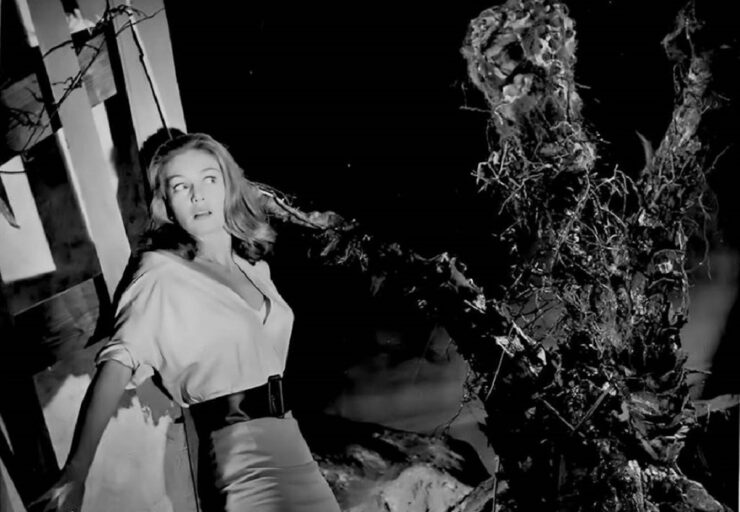“Invasive species” is such a judgmental term. After all, it’s the nature of life to spread when it can. Humans, originally found in Africa but now global, could be seen as invasive. Is it so terrible if other species follow our example—if zebra mussels find their way into the Great Lakes, if Argentine ants find extraordinary success in Europe, or if walking, carnivorous Triffids kill and eat unwary English people? The consensus appears to be “yes,” given how invasive species are treated in science fiction and fantasy.
Who Goes There? by John W. Campbell, Jr. (1938)
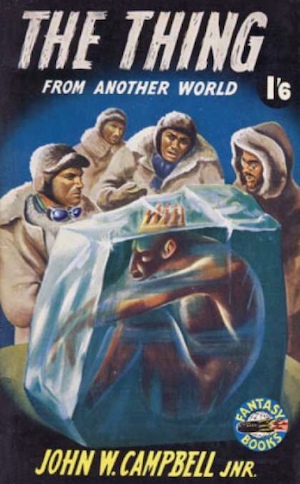
Antarctic explorers stumble over the ancient wreck of an alien starship. Nearby they discover the remains of an alien who apparently survived long enough to freeze in Antarctica’s endless winter. The humans make two fatal errors: they assume the alien froze to death, whereas it only froze, and they bring the remains back with them to their base.
Although frozen solid, the alien is still alive, needing only the warmth of the research station to reanimate itself. Once active, the ravenous shapeshifter begins to consume the researchers one by one, replacing each with seemingly identical duplicates. If the alien can escape Antarctica, the entire terrestrial biosphere is doomed. As their numbers rapidly dwindle, the scientists desperately search for a solution that may not exist.
The fact that the alien got to Earth in a starship raises the question of how many worlds it reached and converted before getting marooned on Earth. Interstellar exploration may be a very bad idea.
“Green Patches” by Isaac Asimov (1950)
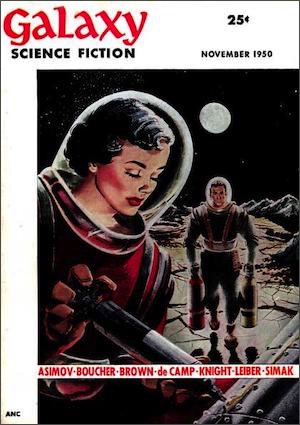
To his increasing alarm, Terran explorer Saybrook discovers that there is only one lifeform on the unknown planet later known as Saybrook’s Planet. To its alarm, Saybrook’s Planet’s planetary consciousness discovers its visitors are pathetic individuals. Its attempt to remake Terran explorers in its image is successful enough for Saybrook to dispatch an alarmed message to Earth before destroying his ship and all aboard.
Years later, a research vessel is dispatched to Saybrook’s Planet. Determined to protect Earth from alien conversion, the researchers take every reasonable precaution against stowaways. Their efforts are successful…almost.
I don’t really understand the logic of funding a mission such that an oversight could very easily led to the involuntary conversion of the entire biomass of Earth. But old-time SF is full of decisions like that.
Pollinators of Eden by John Boyd (1969)
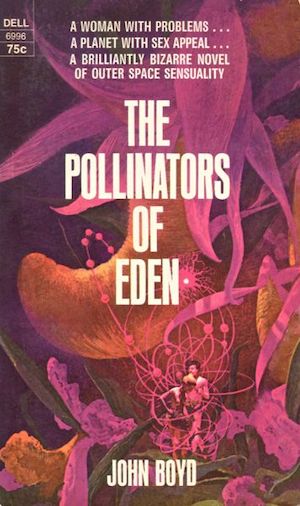
Freda Caron is vexed when her fiancé, Paul Theaston, decides to remain on the alien world Flora rather than return home to Earth to help plan their wedding. But not too vexed. Freda is also a botanist and can understand the allure of the mystery that keeps Theaston on Flora. Flora has no pollinating insects. Why, then, are there flowering plants clearly adapted to partnership with such insects?
The question is intriguing. Freda decides to experiment by planting some imported alien seeds. She soon discovers that the alien plants have bewitching abilities no terrestrial plant can match. When in an excess of prudence she resolves to exterminate the plants, she discovers that they have some lethal defensive adaptations. Has her curiosity doomed the terrestrial ecosphere?
Long forgotten now, Boyd was in his day a bountiful source of sex-obsessed, bizarre novels. This would be one of them. Freda does her best to answer the obvious questions, but there’s one that doesn’t appear to occur to her: Why would it be a good idea to plant alien vegetation on Earth, where it could easily spread?
The Outskirter’s Secret by Rosemary Kirstein (1992)
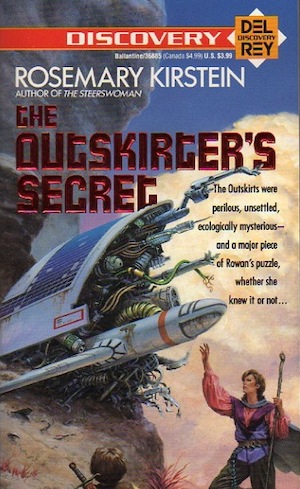
The second Steerswoman novel takes Steerswoman Rowan (a scientist, more or less) from the long-settled Inner Lands into the Outskirts. Rowan’s goal is to discover the place where the mysterious Guidestar fell. As a consequence, Rowan gains a far more detailed understanding of her world’s ecology.
The plants and animals of the Inner Lands are human compatible. Those in the Outskirts have been shaped by a considerably more hostile environment. Beyond the so-called Face, an entirely alien ecology rules. How two such incompatible ecologies could exist next to each other is a puzzle, one whose key may be the harmless phrase “Routine Bioform Clearance.”
Although the Steerswoman series reads at first glance like fantasy (a hypothesis that the cover art of some editions supported), the series is the very hardest of hard SF, an example from which other authors could and should learn. One hopes the long delayed fifth volume will soon appear.
In the Company of Others by Julie E. Czerneda (2001)
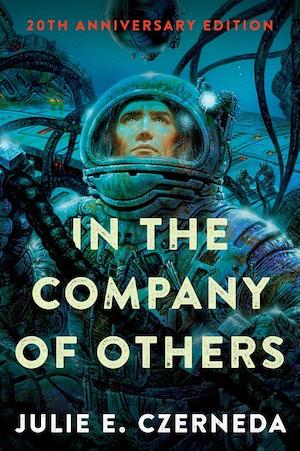
To the delight of terrestrial explorers, the Milky Way has an abundance of Earthlike worlds suitable for human occupation. Given a star drive (which they have), determination, and ingenuity, humanity will surely spread across the galaxy…provided a solution can be found for the Quill.
Seemingly harmless, Quill were introduced to all the colony worlds as a decorative plant. Quill are not harmless. Humans clued into the danger about the time the colonies were being depopulated by the mysterious Quill Effect. Dr. Gail Smith believes she is on track to discover a cure for the Effect. An unwilling Aaron Pardell finds himself drafted to see if Smith is correct. Failure will be embarrassing for Smith, and fatal for Pardell.
I’d love to say nobody would be stupid enough to deliberately spread an invasive species without due diligence. The examples of the common dandelion and kudzu in North America and beavers in Argentina argue otherwise.
***
These are, of course, a very small subset of a thriving subgenre. Perhaps you have your own favorites not mentioned above. If so, feel free to discuss them in comments below.
In the words of fanfiction author Musty181, four-time Hugo finalist, prolific book reviewer, and perennial Darwin Award nominee James Davis Nicoll “looks like a default mii with glasses.” His work has appeared in Interzone, Publishers Weekly and Romantic Times as well as on his own websites, James Nicoll Reviews (where he is assisted by editor Karen Lofstrom and web person Adrienne L. Travis) and the 2021, 2022, and 2023 Aurora Award finalist Young People Read Old SFF (where he is assisted by web person Adrienne L. Travis). His Patreon can be found here.










